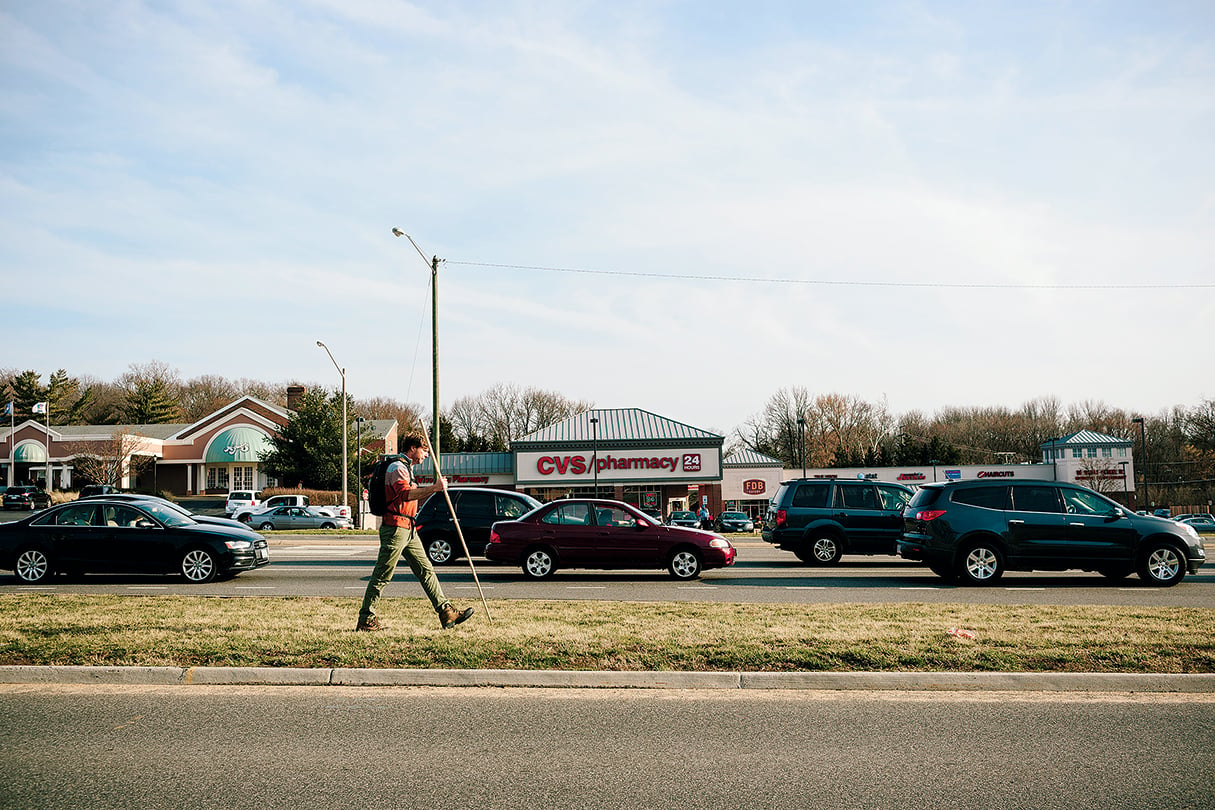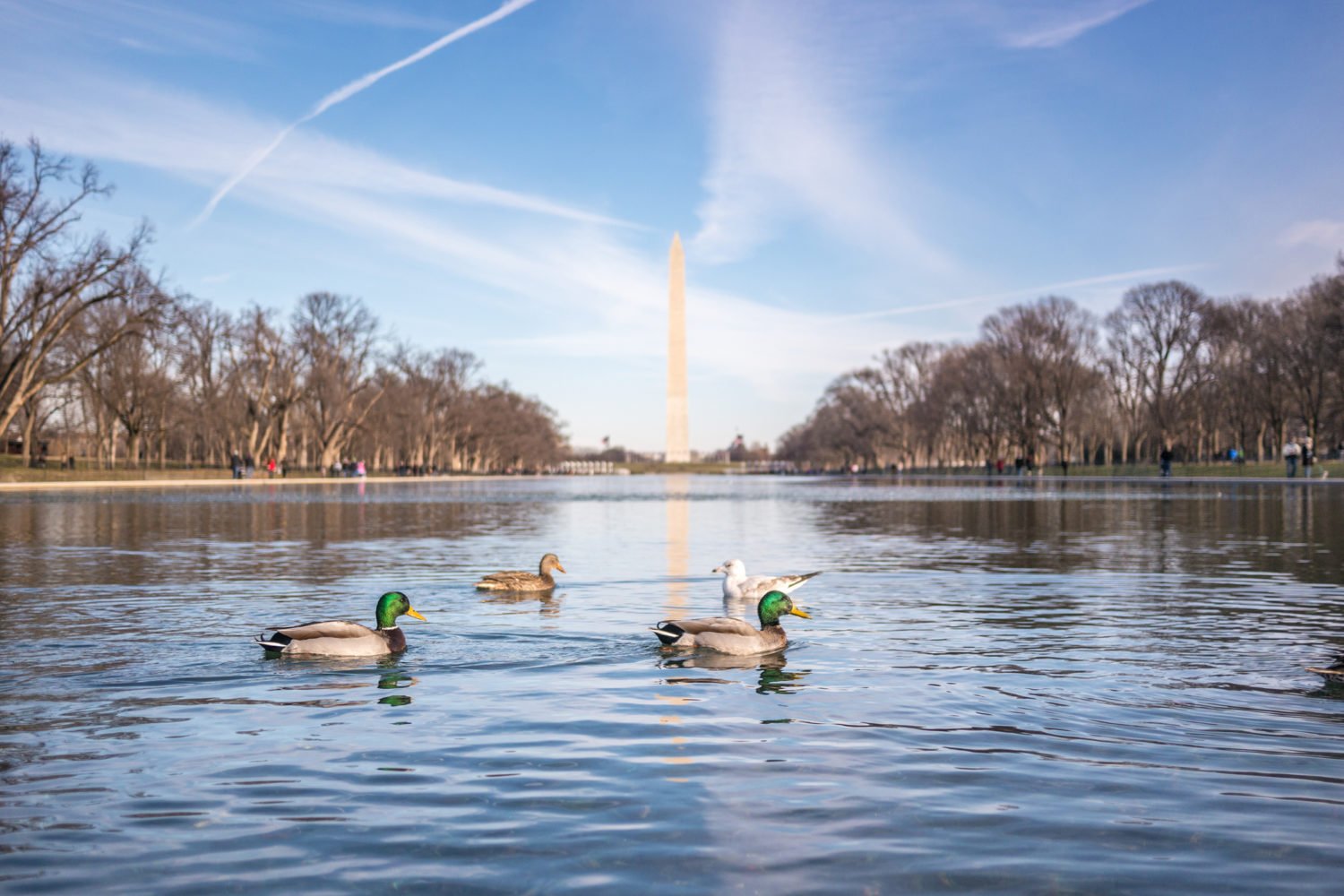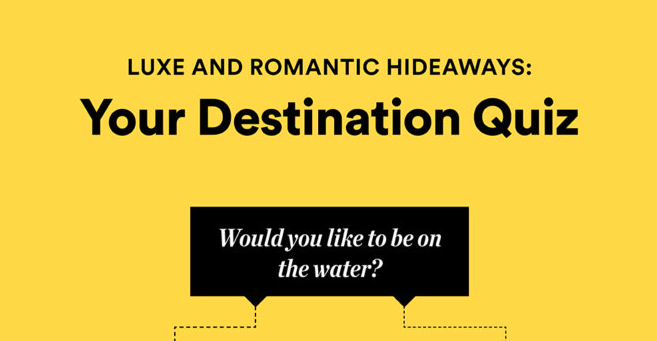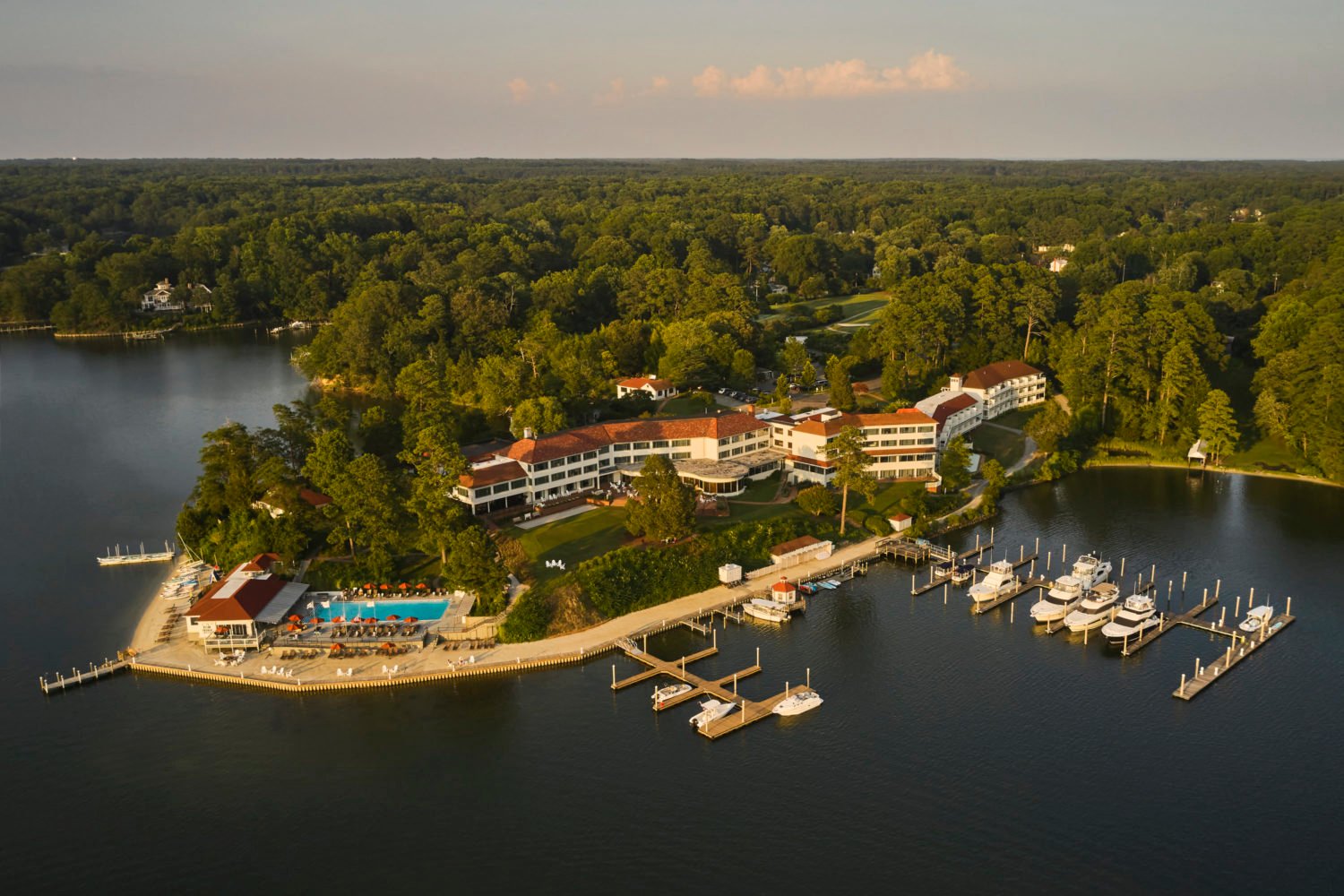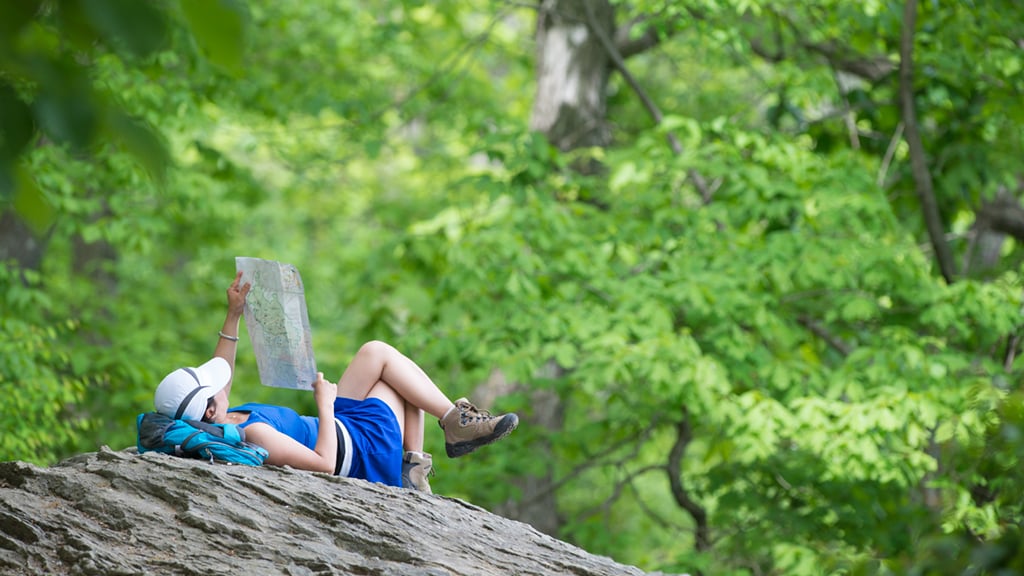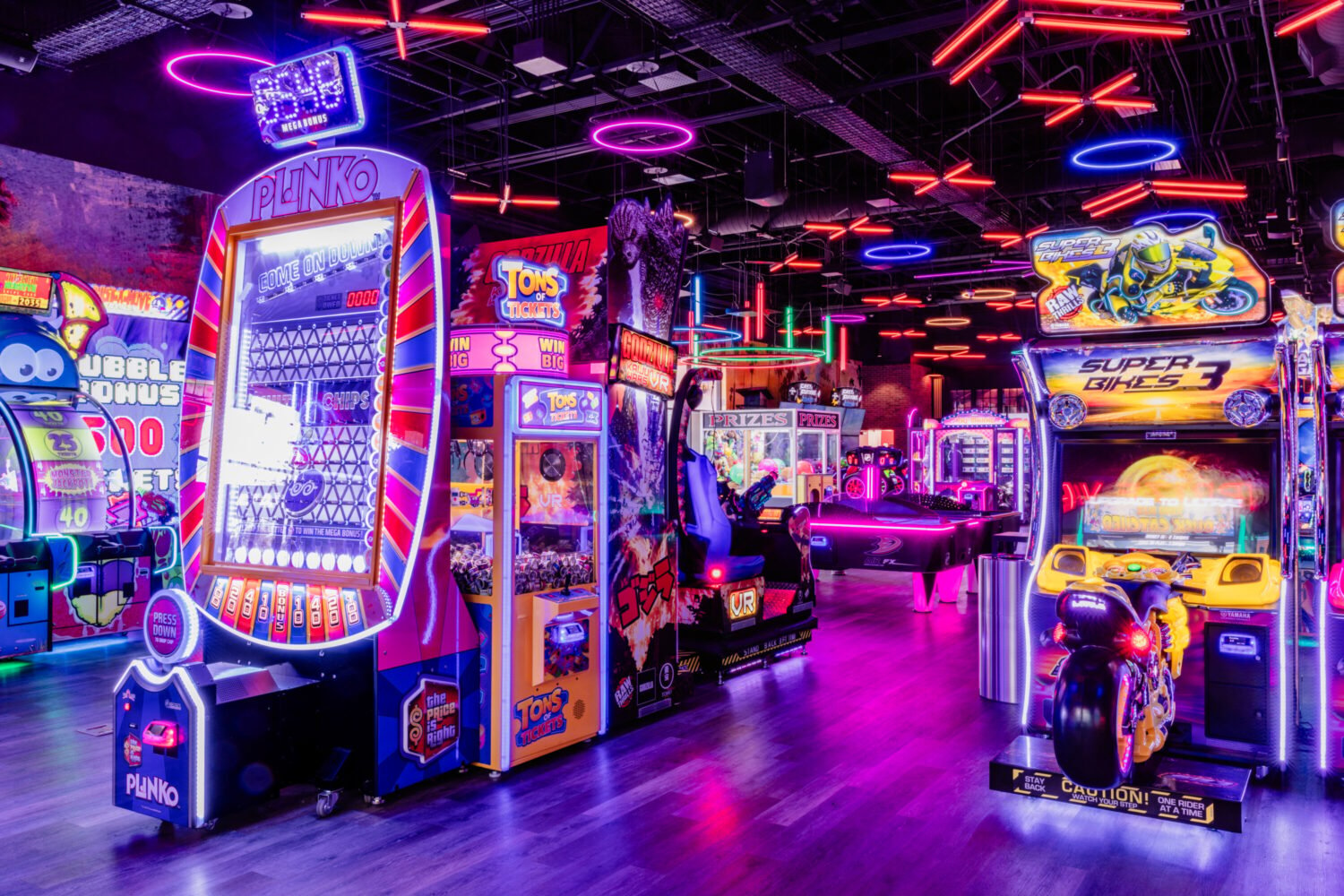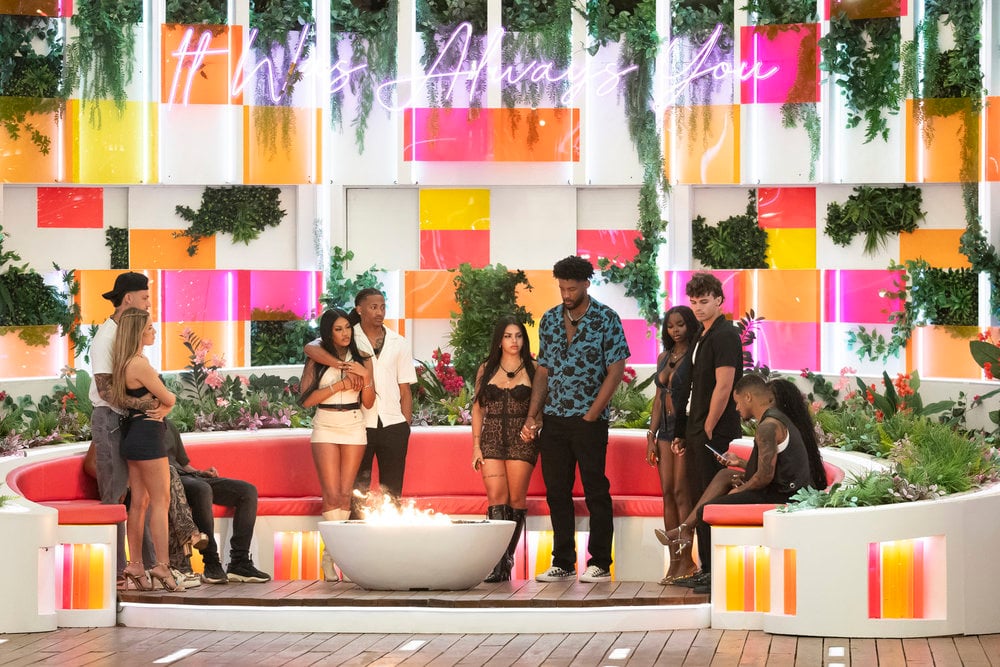On Route 50 near Rosslyn, where Tenth Street used to peel off toward Clarendon Boulevard, the sidewalk petered out briefly beneath an overpass. Behind the wheel of my car, I never would have noticed this small urban-planning hiccup. On foot, however, I had no choice but to jog along a narrow, weedy strip of gravel between the road and a long metal barrier. Vehicles roared past while I tried not to trip or weave into the path of a trucker’s side mirror. I jogged in part because I felt like an interloper. Was walking here illegal? When I heard a siren, I ducked behind a bridge support. A throaty roar filled the concrete canyon, but it was only a motorcycle funeral procession led by cops. A sign ahead read FAIRFAX: 13.
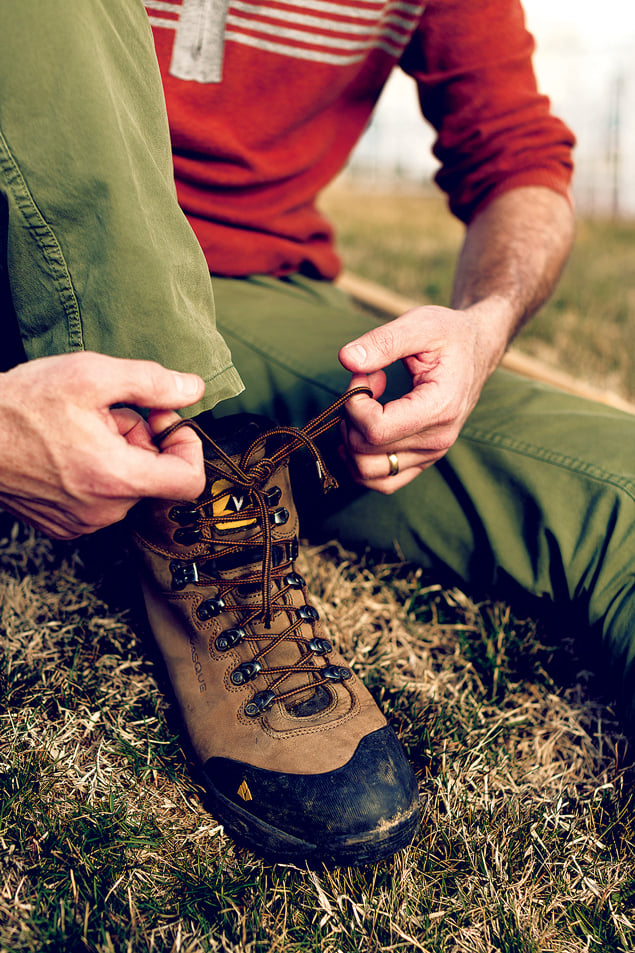
I was walking to Fairfax County and had already covered a few miles after starting at the National Mall. In the District, I had felt like a tourist. The sidewalks were wide, the signs clear, the landscaping attractive. Even the flashing walk/don’t walk signs were kind enough to count down in seconds the amount of time I had to cross the street safely. Now, though still within range of the Potomac, I felt like a second-class citizen. As a walker in suburbia, I was.
We live in a post-ambulatory world. We still walk, of course, but we do it self-consciously—as in “I moved here so I could walk to work” or “I set aside 15 minutes of my lunch break for walking.” We compartmentalize walking. And because time is so precious, we plan walking excursions to within an inch of their lives—zipping into the proper outerwear; strapping on hydration packs stuffed with energy gels and sunscreen; mapping routes, then bringing along fully charged smartphones just in case.
A few years back, I found myself walking less and fetishizing walks more. I wanted my rare ambles to be as wild, pristine, and people-free as possible. I often had to drive long distances just to get started. Naturally, my walks became rarer still. Coming to my senses one day, I realized I had forgotten what I loved about walking in the first place, and I decided my next trek would be through suburbia.
My wager was that walking in itself is worthy (even beyond the physical exercise), that something about the pace engenders discovery and insight and upwellings of freedom verging on the transcendent. In short, that walking, the most human of endeavors, offers a conduit to the higher self, no matter when or where we walk, even in a landscape designed for cars rather than people.
I picked a long stretch of US Route 50, from DC to Fairfax County—a county where nine pedestrians died last year and 109 more were injured. When I explained my plan to my wife, she begged me to wear a helmet.
walking and suburbia less so. When the Atlantic published Henry David Thoreau’s brilliant essay “Walking” in June 1862 (a month after the author’s death), America was still a wild, largely undeveloped land. In the century and a half since, the American landscape has changed considerably. I could fork over a park entry fee, enter a gate, and hike some cordoned-off nature trail. Or I could simply walk.
Which is how, early one unseasonably warm winter Monday a few years ago, I found myself, knapsack slung over a shoulder, squeezed between business-suited commuters on Metro’s eastbound Orange Line. Twenty minutes later, I stepped onto the Mall and headed west, crossing Memorial Bridge, then hanging a right toward Route 50. I felt great—brisk stride, deliciously crisp air, workaday worries dissipating with the morning mist. Smiling, I cinched down on the nylon straps of my knapsack, which contained snacks, water bottle, sunglasses, maps, notebooks, camera, cell phone. No helmet.
along a footpath from the Potomac River west to the Shenandoah Valley. During the 17th and 18th centuries, English colonists formalized the Indians’ path to accommodate wagons hauling trade goods between the Potomac River and Winchester. Like all roads, this strip of beaten earth attracted settlement—small-scale farms to provision travelers and lodging to house them. By 1810, the road was a turnpike. In 1922, the Commonwealth of Virginia took over the turnpike, naming it US Route 50. It eventually linked up with other east-west highways and today stretches from Ocean City, Maryland, through DC to Sacramento, California—a total of about 3,000 miles.
I was acutely interested in the 14 miles connecting the District with the Vienna/Fairfax Metro garage, where I had left my car. By following this westward transect on foot, I would experience firsthand what has become of that original dirt path. Much of my trek would cut through Fairfax County, which has ballooned from 41,000 people in 1940 to more than a million. Every day, tens of thousands of drivers, snug within the fishbowls of their climate-controlled cars, make the very same trip.
My walk—like all good ones—was fueled by a measure of fear. Would I be smacked down by an SUV? Jumped by muggers? Attacked by stray pit bulls? (I had meant to pack pepper spray.) How would I get across the Beltway? I was marching into the unknown.
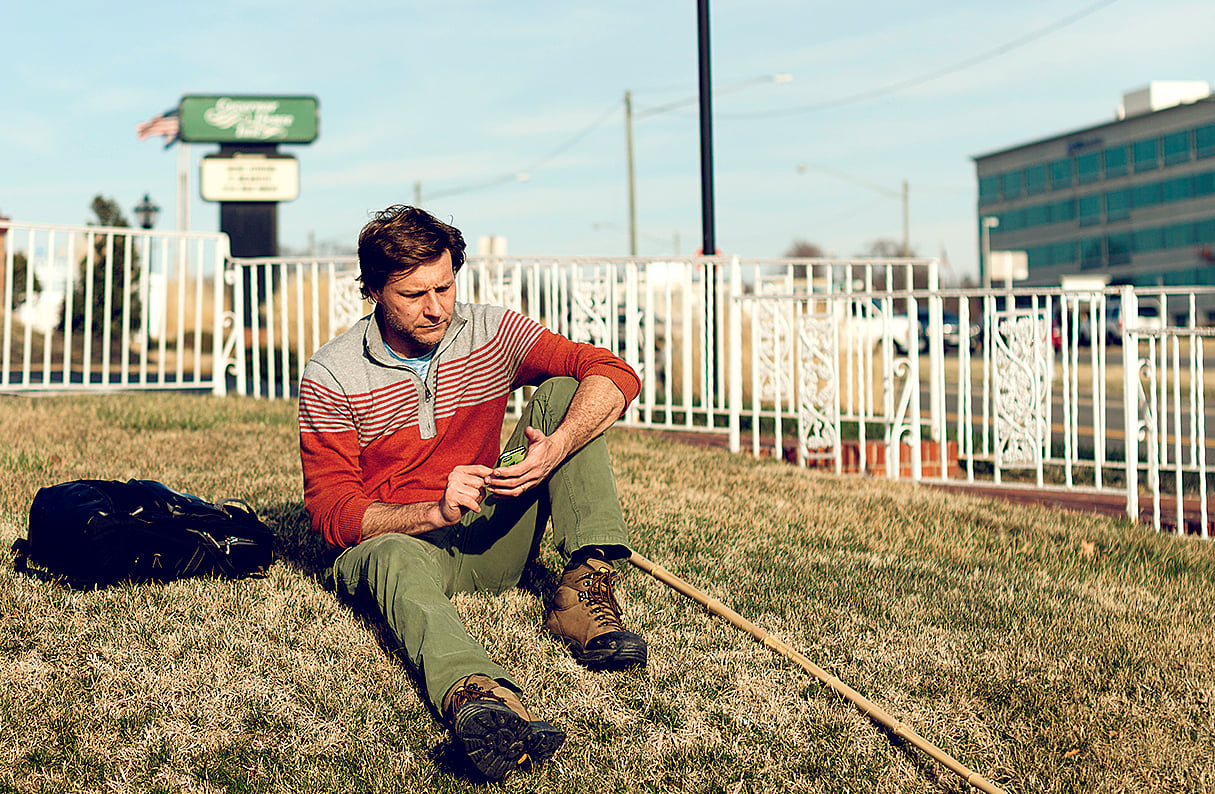
It appeared to be a lonely unknown. Whenever I studied Google’s aerial photos of Route 50 on my computer, no matter how close I zoomed in, I couldn’t reach the human scale. I saw rooftops, cars, and rivers of asphalt, but no people.
Surely I’d meet walkers—the young; the elderly; poor, disenfranchised minorities. Even in our post-ambulatory world, not everyone has a car. I took it as a bad omen when I passed a statue titled “The Hiker” outside Arlington National Cemetery. It was a monument to the soldiers of the Spanish-American War, but seeing him there, with his knapsack, frozen in bronze like something gone extinct, made me feel part of an endangered species myself.
The first walker I encountered was a bearded professorial type—fuzzy wool fedora, soft briefcase—making broad, healthy strides on his way toward the District. We smiled and uttered greetings, and I felt a bond with this solitary ambler. But the feeling evaporated as he rounded a corner and was gone from sight. Soon after, I was jogging, heart pounding, along that weedy strip beneath the overpass.
and pretty soon I found myself in that magical walker’s rhythm, pondering the layers of suburban development—from the inner ring of low-rise brick apartment buildings to the outer rings of cul-de-sac homes—like a geologist studying an exposed sedimentary cliff.
My senses were fully engaged—and overwhelmed. The sounds were deafening: engines and horns, construction work, thumping car stereos. I felt my bowels tremble as trucks rumbled across bridges. The foul odor of road tar was my constant companion, giving me the impression that this manmade sprawl was constantly being fed. The roadside was awash in litter: shattered bits of plastic bumper, Styrofoam, butane lighters and cigarette packs, soda bottles, tall-boy cans. I passed a couch and a mattress. Along one stretch of roadside, I saw the red flower-like petals of a poinsettia nestled in the leaf cover and thought, “How wonderful! It must have sprouted here.” I felt like a dope when I realized it was plastic.
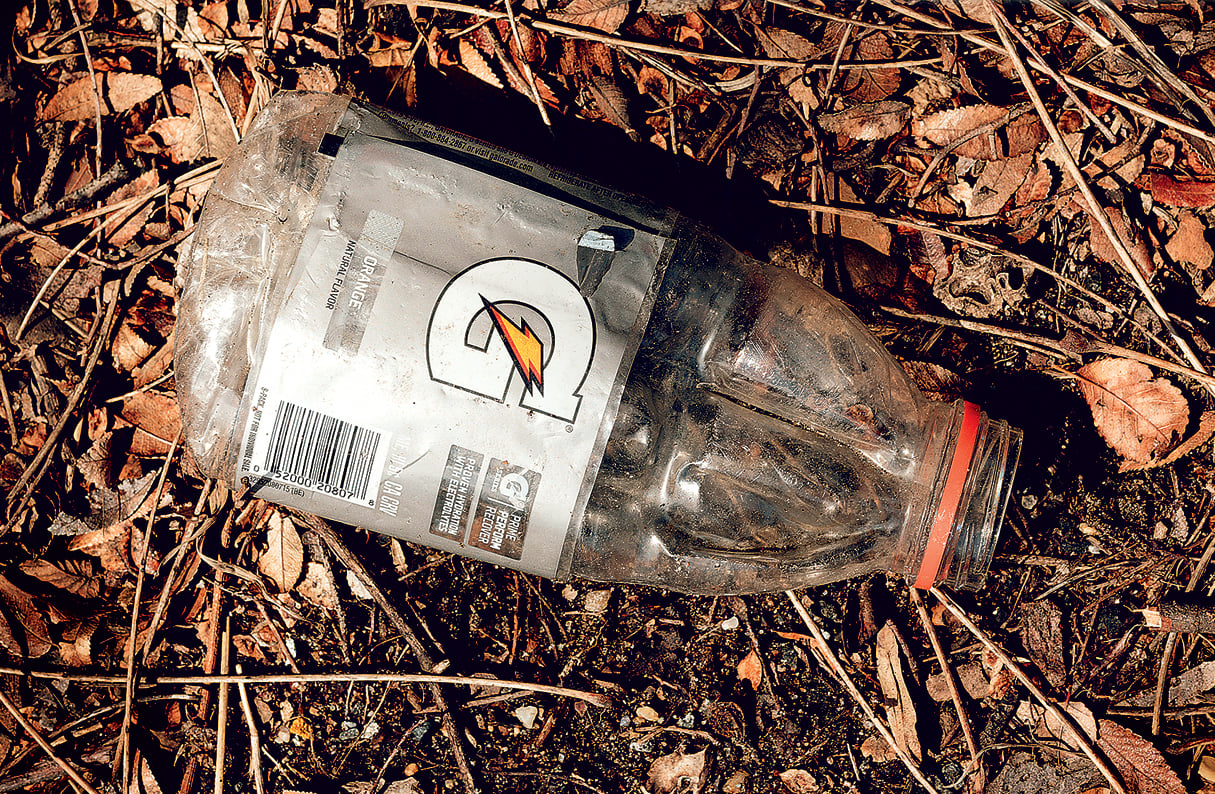
If I’d been hiking in the woods, I would have plopped down on a rock for a snack. Instead, I stopped in the tree-covered quiet of Columbia Gardens Cemetery in Arlington to munch granola. After several hours, I stopped to rest inside the Thomas Jefferson Library in Falls Church, refilling my water bottle and checking my map. Soon I was back on the sidewalk.
that fast-flowing river of two-way traffic. There was no way I was going to try to Frogger my way across it—at least not without a helmet. Besides, I know for a fact that crossing the Beltway on foot is illegal. Instead, I picked a slightly less dangerous (though still probably unlawful) route through the tangle of ramps and bridges below I-495. I shimmied alongside a guardrail, hopped a Jersey barrier, sprinted across an on-ramp, and jogged through a tunnel to safety, while drivers rebuked me with sharp blasts from their horns.
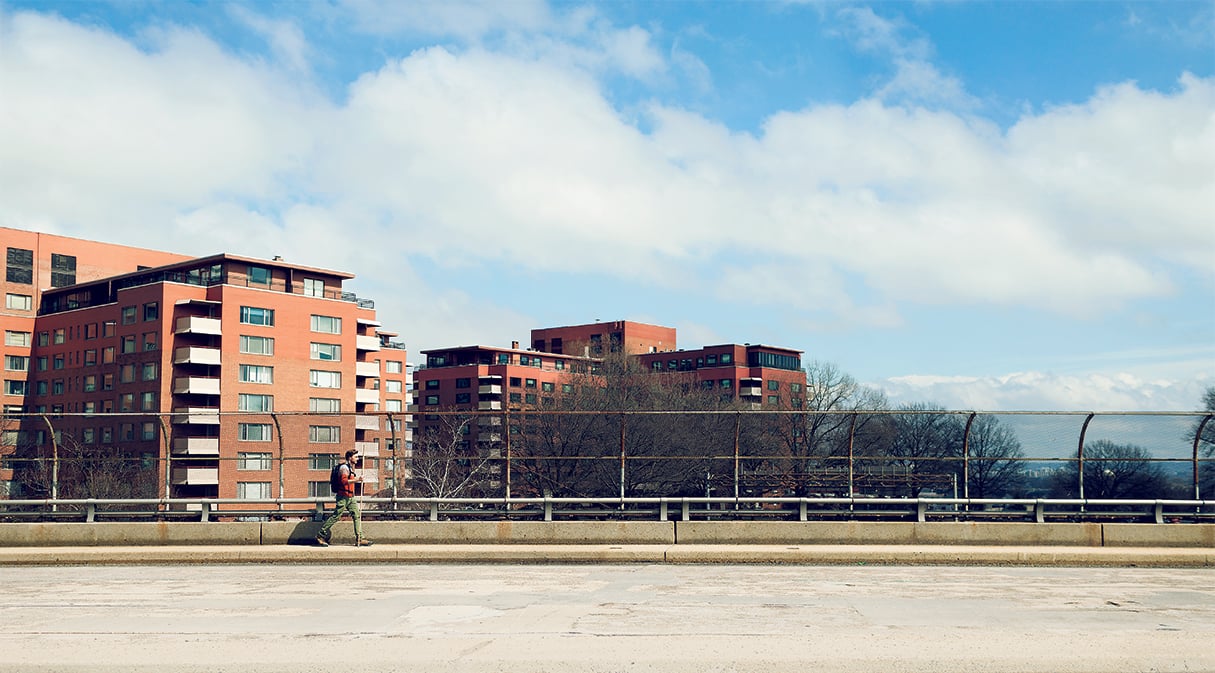
On the other side of the Beltway, the scale of suburbia ballooned: wider roads, more traffic congestion, bigger big-box stores. For the first time in six hours, I glimpsed pedestrians—two Latino men and a woman, groaning under the weight of shopping bags on the other side of busy Gallows Road. I wanted to ask them about the realities of getting around this hostile environment on foot, and also because after hours of no human contact, I was lonely. Thousands of people had passed me in cars, but with the glare and tinted windows, I couldn’t see their faces. It was as if they didn’t exist.
I waved to the trio, but they didn’t see me. I watched hopelessly as they disappeared.
Soon after, I saw two more passers-by, a middle-aged Latino man and a Latino woman, also walking with shopping bags.
“Excuse me,” I said. “Do you mind if I talk to you?”
They stopped and stared blankly.
“¿Habla español?” I asked.
“Sí,” the man said. The woman mumbled something to him, and they started walking. Fast. Who talks to strangers on the street?
in and out. I made my way through parking lots and on shoulders. I crossed Prosperity Avenue in Merrifield, past a cul-de-sac subdivision of McMansions with their backs to the public.
To reach the Metro parking garage, I cut through a quiet neighborhood of townhouses. Near Silent Valley Drive, I saw a human, but he was the mailman. Then my pulse quickened. A guy was walking toward me. I noticed he swayed and stumbled slightly.
“Hello,” I said. “How are you?”
He threw out his hand for a handshake, jumping slightly when a tiny bird shot up from the trash cans beside us. “Señor!” he bellowed. His breath smelled like a beer-hall floor.
“¿Habla español?” I said.
“Yes, I do. And Inglessss,” he said in an accented slur. He was dressed nicely, in a plaid polo button-down and khakis, but his belt was oddly twisted. His hair was mussed, and he needed a shave.
“Do you ever walk to work?” I asked.
“Right now, señor, I am sorry to say that I do not have work.”
“What sort of work do you do,” I said, “when you have it?”
“I can fix your air conditioner. I do plumbing. I do real good work. Do you need me to fix your air conditioner?” And then, out of nowhere, as if the thought had just struck him, he blurted out, “Señor!” and threw out his hand to shake mine. His eyes wobbled in their sockets.
My last stop was Starbucks. I walked in around 4 pm and back out sipping a hot coffee wrapped in a java jacket. I picked up the sidewalk and followed it to the Metro station, where waves of commuters filed toward the parking garage. I slipped into the crowd with my coffee. It was as if I were somebody again.
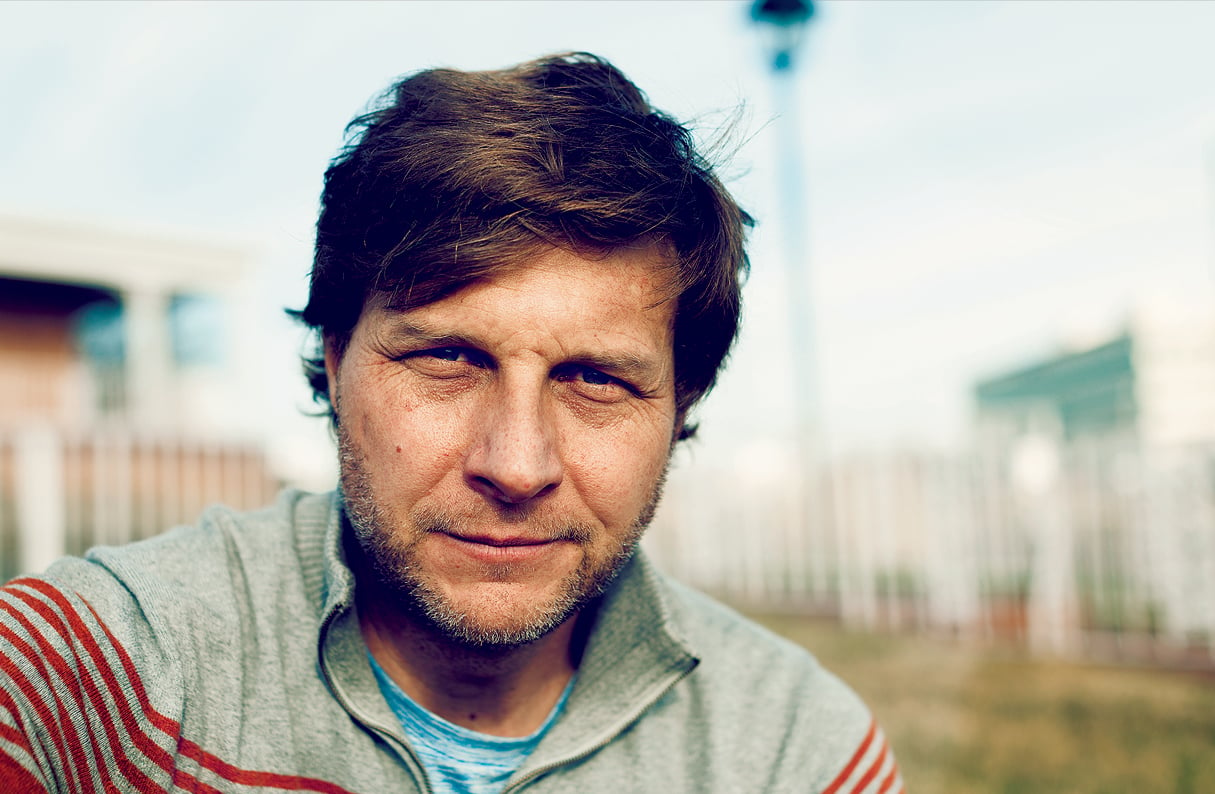
Though exhausted and foot-sore after eight hours of pavement-pounding, I glowed with a sense of accomplishment. From walking a route I could have driven in 20 minutes in light traffic? Sure. How would an eight-hour walk along the C&O Canal have been any different? More peaceful, perhaps, with more flora and fauna. But on my trek, I had found plenty to spark my curiosity and occupy my mind. “In my afternoon walk I would fain forget all my morning occupations and my obligations to society,” Thoreau wrote, and “. . . return to my senses.”
Maybe that best sums it up: Walking brings us back to our senses.
Logan Ward is author of the book “See You in a Hundred Yeras.” He lives in Fairfax, not far from route 50.
This article appears in our May 2015 issue of Washingtonian.

